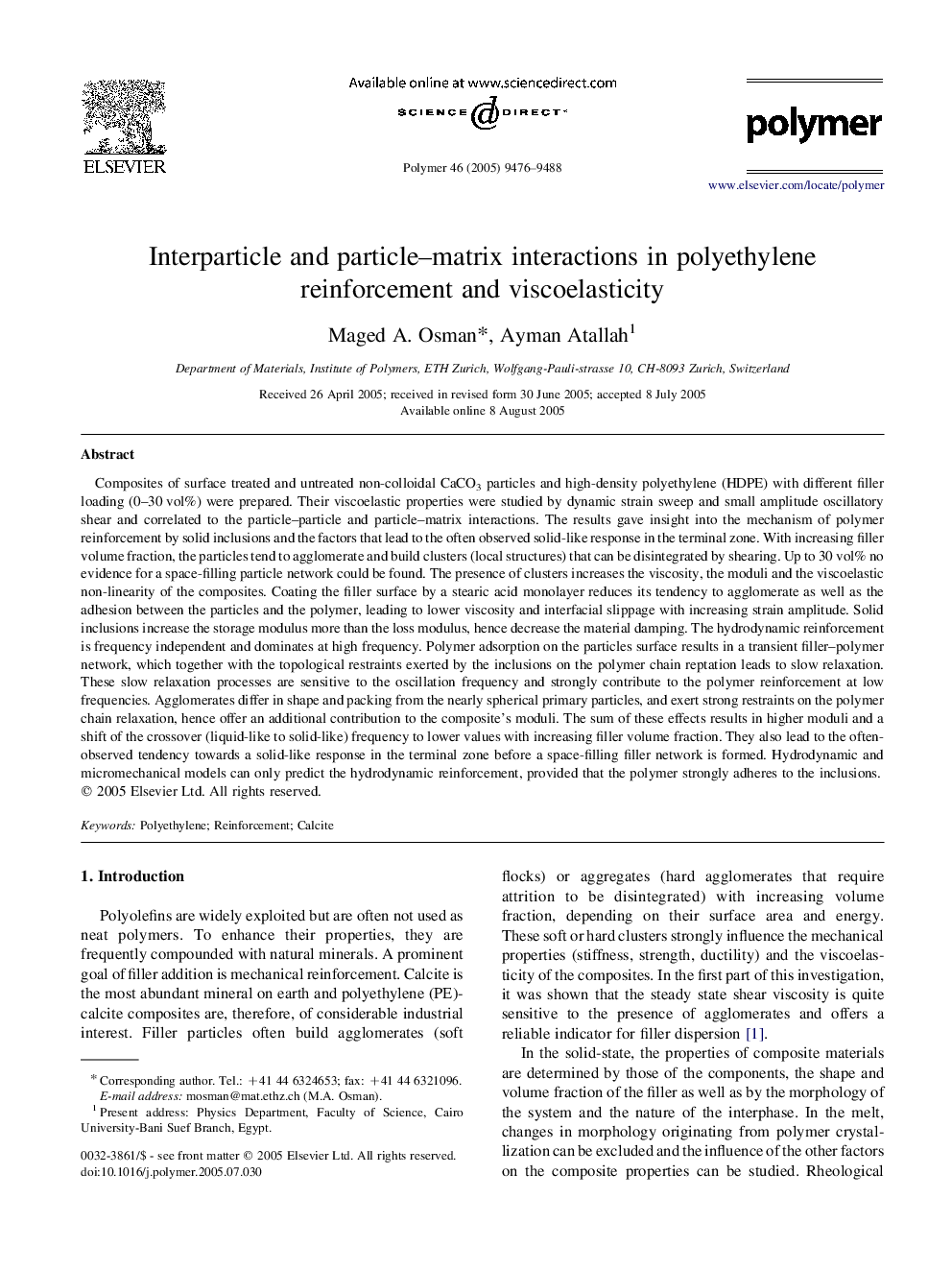| کد مقاله | کد نشریه | سال انتشار | مقاله انگلیسی | نسخه تمام متن |
|---|---|---|---|---|
| 5190450 | 1381206 | 2005 | 13 صفحه PDF | دانلود رایگان |
عنوان انگلیسی مقاله ISI
Interparticle and particle-matrix interactions in polyethylene reinforcement and viscoelasticity
دانلود مقاله + سفارش ترجمه
دانلود مقاله ISI انگلیسی
رایگان برای ایرانیان
موضوعات مرتبط
مهندسی و علوم پایه
شیمی
شیمی آلی
پیش نمایش صفحه اول مقاله

چکیده انگلیسی
Composites of surface treated and untreated non-colloidal CaCO3 particles and high-density polyethylene (HDPE) with different filler loading (0-30Â vol%) were prepared. Their viscoelastic properties were studied by dynamic strain sweep and small amplitude oscillatory shear and correlated to the particle-particle and particle-matrix interactions. The results gave insight into the mechanism of polymer reinforcement by solid inclusions and the factors that lead to the often observed solid-like response in the terminal zone. With increasing filler volume fraction, the particles tend to agglomerate and build clusters (local structures) that can be disintegrated by shearing. Up to 30Â vol% no evidence for a space-filling particle network could be found. The presence of clusters increases the viscosity, the moduli and the viscoelastic non-linearity of the composites. Coating the filler surface by a stearic acid monolayer reduces its tendency to agglomerate as well as the adhesion between the particles and the polymer, leading to lower viscosity and interfacial slippage with increasing strain amplitude. Solid inclusions increase the storage modulus more than the loss modulus, hence decrease the material damping. The hydrodynamic reinforcement is frequency independent and dominates at high frequency. Polymer adsorption on the particles surface results in a transient filler-polymer network, which together with the topological restraints exerted by the inclusions on the polymer chain reptation leads to slow relaxation. These slow relaxation processes are sensitive to the oscillation frequency and strongly contribute to the polymer reinforcement at low frequencies. Agglomerates differ in shape and packing from the nearly spherical primary particles, and exert strong restraints on the polymer chain relaxation, hence offer an additional contribution to the composite's moduli. The sum of these effects results in higher moduli and a shift of the crossover (liquid-like to solid-like) frequency to lower values with increasing filler volume fraction. They also lead to the often-observed tendency towards a solid-like response in the terminal zone before a space-filling filler network is formed. Hydrodynamic and micromechanical models can only predict the hydrodynamic reinforcement, provided that the polymer strongly adheres to the inclusions.
ناشر
Database: Elsevier - ScienceDirect (ساینس دایرکت)
Journal: Polymer - Volume 46, Issue 22, 24 October 2005, Pages 9476-9488
Journal: Polymer - Volume 46, Issue 22, 24 October 2005, Pages 9476-9488
نویسندگان
Maged A. Osman, Ayman Atallah,